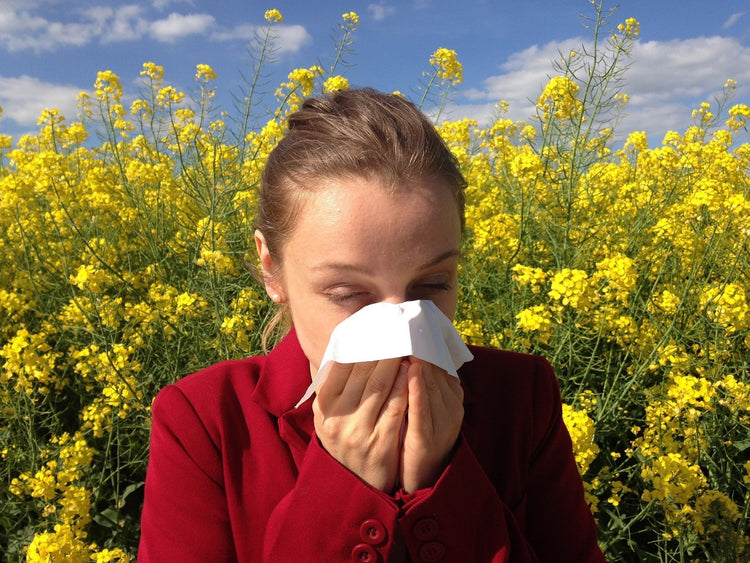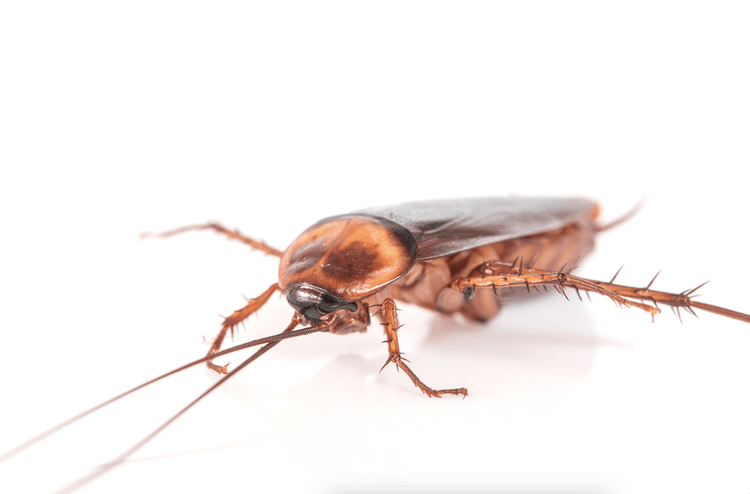
 Instagram
Instagram
Coconut Allergy: Symptoms, Cross-Reactivity & Foods to Avoid


Related products
Introduction to Coconut Allergy
Definition of coconut allergy
Coconut allergy refers to an adverse immune response triggered by the consumption or contact with coconut and its derivatives. Like other food allergies, coconut allergy occurs when the immune system mistakenly identifies coconut proteins as harmful substances and produces antibodies to neutralise them, resulting in various allergic symptoms.
Prevalence and significance
Coconut allergy is relatively rare, but its prevalence has been increasing, likely due to the growing use of coconut in food products and personal care items. As coconut is not classified as a tree nut by the U.S. Food and Drug Administration (FDA), it is not subject to the same labelling requirements, making it challenging to identify and avoid for those with allergies. According to Dr. Scott Sicherer, a professor at the Icahn School of Medicine at Mount Sinai, about 0.5% of people in the United States are affected by coconut allergy.
Nutritional benefits of coconut
Coconut is highly nutritious, providing a rich source of vitamins, minerals, and healthy fats. It is known for its antioxidant, antimicrobial, and anti-inflammatory properties. However, individuals with a coconut allergy need to avoid coconut and its derivatives to prevent allergic reactions, making it crucial to find alternative sources of nutrition.
Coconut Allergy: An Overview
Allergenic components of coconuts
The allergic reaction to coconut is primarily triggered by specific proteins found in coconut. These proteins include:
Coconut proteins
Research has identified several allergenic proteins in coconut, including Cocosin, a 14 kDa protein, and a 35 kDa protein. These proteins can provoke an immune response in susceptible individuals.
Other coconut allergens
Besides proteins, some individuals may also be allergic to other components of coconut, such as the fat or the sugar found in coconut products.
Cross-reactivity with other allergens
Coconut allergy can be associated with cross-reactivity to other allergens, such as tree nuts and latex:
Tree nut allergy
Although coconut is botanically a fruit, some people with tree nut allergies may also experience allergic reactions to coconut. Dr. Sicherer explains that the risk of cross-reactivity between coconut and tree nuts is relatively low, but it can still occur in some cases.
Latex-fruit syndrome
Some individuals with a latex allergy may also experience allergic reactions to coconut due to a condition known as latex-fruit syndrome. This syndrome results from cross-reactivity between proteins found in natural rubber latex and those found in various fruits, including coconut.
Causes and Risk Factors of Coconut Allergy
Genetic predisposition
A family history of allergies, including food allergies, increases the risk of developing a coconut allergy. According to Dr. Jonathan Bernstein, a professor at the University of Cincinnati College of Medicine, genetic factors play a crucial role in the development of allergies, including coconut allergy.
Environmental factors
Environmental factors can also influence the development of coconut allergy. Exposure to allergens in the environment, such as pollen, dust mites, or animal dander, may increase the risk of developing allergies in general, including coconut allergy. Individuals concerned about environmental sensitivities might consider an Environmental Intolerance Test to better understand their allergic triggers. Additionally, the increased use of coconut and coconut-based products in food and cosmetics can contribute to sensitisation and the development of an allergic response.
Previous exposure to allergens
A history of exposure to coconut or other allergens may increase the likelihood of developing a coconut allergy. Individuals who suspect sensitivity may benefit from taking a Combined Allergy and Intolerance Blood Test to identify possible allergens accurately.
Symptoms of Coconut Allergy
Mild to moderate symptoms
Coconut allergy can cause a range of mild to moderate symptoms, which typically appear within minutes to hours after exposure to coconut. Some common symptoms include:
Oral allergy syndrome
Oral allergy syndrome, also known as pollen-food allergy syndrome, is characterised by itching, tingling, or swelling of the lips, tongue, or throat after consuming coconut. This reaction is usually mild and resolves on its own within a short time.
Skin reactions
Contact with coconut or coconut-derived products can cause skin reactions, such as itching, redness, hives, or eczema. These symptoms can occur as a result of direct contact with coconut or through the ingestion of coconut-containing foods.
Gastrointestinal symptoms
Individuals with a coconut allergy may experience gastrointestinal symptoms after consuming coconut or coconut-based products. These symptoms can include nausea, vomiting, abdominal pain, and diarrhoea.
Severe symptoms
In rare cases, coconut allergy can lead to a severe, life-threatening allergic reaction called anaphylaxis. Symptoms of anaphylaxis may include:
Anaphylaxis
Anaphylaxis is a severe, potentially life-threatening allergic reaction that can occur rapidly after exposure to an allergen. Symptoms of anaphylaxis may include difficulty breathing, a rapid or weak pulse, low blood pressure, confusion, chest pain, and loss of consciousness. Anaphylaxis requires immediate medical attention and can be fatal if left untreated.
Diagnosis and Testing for Coconut Allergy
Medical history and physical examination
The first step in diagnosing a coconut allergy is to obtain a detailed medical history and perform a physical examination. A healthcare professional will ask about the symptoms experienced, the timing of their occurrence, and any potential exposure to coconut or coconut-derived products.
Skin prick tests
A skin prick allergy test is a common diagnostic tool used to identify a coconut allergy. This test involves pricking the skin with a small amount of coconut extract and observing the reaction. If a raised, red bump (called a wheal) forms, it may indicate an allergic reaction to coconut.
Blood tests
Blood tests, such as an IgE Immunoglobulin Blood Test, measure coconut-specific IgE antibodies and help confirm a coconut allergy diagnosis.
Oral food challenge
An oral food challenge is considered the gold standard for diagnosing a coconut allergy. This test involves consuming gradually increasing amounts of coconut under medical supervision while monitoring for allergic symptoms. If a reaction occurs, the test is stopped, and the allergy is confirmed.
Management and Treatment of Coconut Allergy
Avoidance of coconuts and coconut-containing products
The primary management strategy for a coconut allergy is the strict avoidance of coconut and coconut-containing products. This involves:
Reading food labels
Reading food labels carefully is essential for individuals with a coconut allergy. As coconut is not classified as a tree nut, it may not be listed as an allergen on the packaging. Look for ingredients such as coconut oil, coconut milk, or coconut cream, which can indicate the presence of coconut in a product.
Identifying hidden sources of coconut
Coconut can be found in many food products, as well as personal care items such as soaps, shampoos, and lotions. Being aware of hidden sources of coconut and avoiding them is crucial for individuals with a coconut allergy.
Medications for coconut allergy
If accidental exposure to coconut occurs, medications can help manage the allergic symptoms:
Antihistamines
Antihistamines can help alleviate mild to moderate coconut allergy symptoms, such as itching, hives, and gastrointestinal discomfort. They work by blocking the action of histamine, a chemical released by the immune system during an allergic reaction.
Epinephrine auto-injector
For individuals at risk of anaphylaxis due to coconut allergy, carrying an epinephrine auto-injector is essential. Epinephrine is a life-saving medication that can quickly reverse the symptoms of anaphylaxis when administered promptly.
Corticosteroids
Corticosteroids can be prescribed to reduce inflammation and swelling associated with a severe coconut allergy reaction. These medications are typically reserved for more severe cases and should be used under the guidance of a healthcare professional.
Emergency care for coconut allergy
In the event of a severe allergic reaction to coconut, seeking immediate medical attention is crucial. This may include calling emergency services or going to the nearest emergency department.
Recognising the signs of anaphylaxis
Recognising the signs of anaphylaxis is crucial for individuals with a coconut allergy, as early intervention can save lives. Symptoms of anaphylaxis can include difficulty breathing, rapid or weak pulse, low blood pressure, confusion, chest pain, and loss of consciousness.
Seeking immediate medical assistance
If anaphylaxis is suspected, it is vital to seek immediate medical assistance by calling emergency services or going to the nearest emergency department. Administering an epinephrine auto-injector, if available, can help reverse the symptoms of anaphylaxis while waiting for medical help.
Lifestyle modifications for coconut allergy
Living with a coconut allergy requires adapting to certain lifestyle modifications, such as:
Communicating allergy to food providers
Individuals with a coconut allergy should communicate their allergy to food providers, such as restaurant staff or caterers, to ensure that their meals are prepared without coconut or coconut-derived ingredients.
Creating a supportive environment
Educating friends, family members, and colleagues about the coconut allergy can help create a supportive environment where the risk of accidental exposure is minimised. This includes informing them about the importance of avoiding cross-contamination in shared kitchen spaces.
Prevention Strategies for Coconut Allergy
Introduction of allergenic foods during infancy
Although there is limited research specifically related to coconut allergy, introducing allergenic foods during infancy has been shown to potentially reduce the risk of developing food allergies in general. The American Academy of Pediatrics recommends introducing allergenic foods, such as peanuts and eggs, between 4-6 months of age .
Allergen immunotherapy
Allergen immunotherapy, also known as allergy shots, is a treatment that aims to desensitise the immune system to specific allergens. Although this treatment is primarily used for environmental allergies and bee venom, it is currently being researched for its potential effectiveness in treating food allergies, including coconut allergy.
Ongoing research and future developments
Continued research is crucial for advancements in diagnostics, treatments, and possibly a cure for coconut allergy. For comprehensive intolerance assessment, individuals can consider a Premium Intolerance Test.
Conclusion
The importance of understanding and managing coconut allergy
Understanding and managing coconut allergy is essential for the well-being and safety of individuals affected by this condition. Proper education, diagnosis, and management strategies can significantly reduce the risk of severe allergic reactions and improve the quality of life for those with a coconut allergy.
The role of healthcare professionals, patients, and caregivers in successful allergy management
Collaboration among healthcare providers, patients, and caregivers is essential for successful coconut allergy management. Individuals uncertain about their allergic status might find benefit in taking a general Food Intolerance Test. For further exploration of allergy-specific resources, visit the dedicated Intolerance Tests Collection.
To learn more about Allergies, read our comprehensive guide that covers: Allergies:, Types, Causes, Symptoms, Diagnosis, and Treatment options. If you are looking for treatments for hay fever or general allergens, then visit our extensive page with allergy and hayfever medication and tablets.



















 Rated Excellent by 26,523+ Reviews
Rated Excellent by 26,523+ Reviews